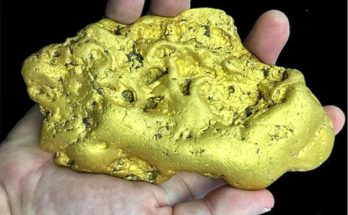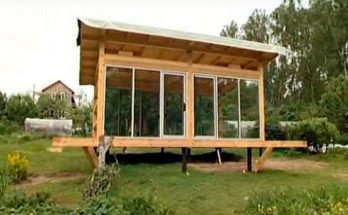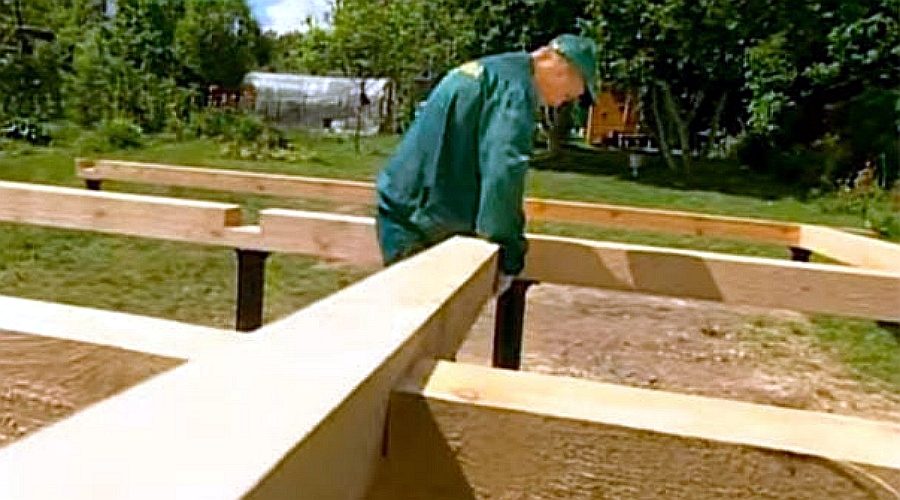Research Says Fresh Flowers in your Home can Actually Reduce Pain and Stress

Have you ever come home to a fresh bouquet or new plant and felt something shift inside you? Science says there’s a reason for that. A study done by four individuals concluded that not only did seeing fresh flowers (in this case, red roses) decrease the amount of oxy-hemoglobin levels in the right prefrontal cortex, it also decreased sympathetic nervous activity, thereby reducing stress, and induced relaxation. I don’t know about you, but this sounds like a fantastic way to unwind without having to pay for a luxurious retreat.
In the study, one set of university students were given a few minutes to view red roses while their responses were recorded with a variety of machines. Another set was not given flowers, but were recorded so that the responses could be compared. Between the two groups there was a marked difference – the group that were given flowers experienced a significant increase in relaxation.
So why is this important? Think about all the places that cause us stress – the office, hospital, financial institutions, school, transportation (particularly airports). This is why people put plants on their desks at work, why schools and prisons are incorporating more green space, and why hospital visitors often bring flowers to their loved ones. The more plants we have in our lives, the better off we’ll be, physically (due to their production of oxygen), and mentally.
If you’ve rarely or never had plants nearby, it might be time to consider purchasing some at your local garden center. You can start off small with a potted succulent or some African violets. If you’re used to gardening outside and want to experiment with plants living indoors, you can start a windowsill herb garden or put some ferns in the sun porch. However you’re able to add plants to your life, it’s a good idea to start incorporating them. Keep them watered, watch them grow, and know that you’re helping the environment as well as yourself.
How To Get Rid Of Any Burrowing Animals With This Dawn Soap Solution

While there’s a time to enjoy and share space with wildlife, most people would prefer to keep their own space free of said wildlife. The words “vermin” and “pest” come to mind with a host of burrowing, digging animals – moles, gofers, squirrels, chipmunks, prairie dogs, voles, etc. You’ve probably stepped outside to enjoy the morning or get the mail only to have your foot sink into one of these critters’ tunnels. If your yard is a maze of tunnels, you’re probably considering calling in an exterminator or, as a last ditch effort, thinking about attempting such an extermination yourself.
There is, however, a more peaceful, less expensive way to rid your yard of these irksome creatures. You most likely have all the ingredients on hand, and if you don’t, they are easily obtainable from the nearest supermarket. To make a non-toxic spray that will drive away all the burrowing animals in your yard, you will need to gather up the following materials:
- Water
- Dawn soap
- Castor oil
- Spraying attachment for garden hose
Mix the proper amounts of each of the liquid ingredients (link to the recipe is below), and use the spray attachment to help you cover the yard with your homemade concoction. You will need to keep an eye on the yard and burrows, and spray the yard again once a week for nearly a month, but this way the animals will move to another location, you’ll have your beautiful yard again, and no one got hurt. It’s the perfect solution for an animal lover, whether you’re a vet, wildlife conservationist, or pet owner. This spray would also be a boon to those who are moving to the country. You can make up a batch ahead of time and prepare your yard or garden area before planting anything new. While there are other mixes and sprays that help with various and sundry problems, this basic recipe will solve the vast majority of issues with tunneling.
Wow. Look at this Incredible Giant Ammonite found by Andy Randell

But is it real?
This is a huge Titanites Ammonite, so big it has been named the “fossil truck tire”! And recently, it was found by a team of explorers including the photographer of this pic, Andy Randell, who posted it to the StrataGeoData twitter, with the caption, “Nice find by the team today! Titanites sp., a giant ammonite fossil from south eastern British Columbia!”
Because so many people liked Randell’s pic, it even made it’s way to Snopes for fact-checking if it was actually real!
This giant ammonite fossil was first found in 1947 by British Columbia Geological Survey geologist Chuck Newmarch outside the town of Fernie, B.C., Canada.
When it was reported on by Mountain Culture, they had this to say: “In July 1947, geologists stumbled upon the ammonite fossil while mapping coal seams in Fernie’s Coal Valley. The discovery of a “fossil truck tire” in the sandstone by Coal Creek was reported, and Chuck Newmarch, a geologist with the British Columbia Geological Survey, was sent to investigate. He recognized it as a giant specimen of ammonite, a long-lost relative of the modern-day, shelled nautilus, which is in the cephalopod family that includes the octopus, the squid and the cuttlefish.”
So yes, it’s real, and it’s thought to be the biggest such ammonite fossil in Canada.
Giant Gold Nugget Found in California

How would you feel if you were on a regular daily walk with your metal detector, thinking about the small change you might find, only to discover a giant gold nugget? That’s what happened to a prospector in California, who thought he had stumbled upon a piece of iron. After uncovering the find, he realized that he had made a huge discovery, and went to get it appraised. The giant gold nugget weighed in at 75 troy ounces (a troy ounce is a little over 31 grams), which is over five pounds. People speculate that this is one of the most major gold finds in California, although we don’t know the name of the prospector, nor the exact location where the gold was found (we do know it was located in the general area of Butte County).
There’s a history of high quality gold found in Butte County, though of course the gold rush and its end results have limited the amount people find today. That being said, placer and lode deposits are still present in the area, including the Magalia, Yankee Hill, and Oroville mining districts. It’s still an incredibly desired commodity, as gold is still used today in a variety of industries, including technology (it’s an excellent conductor for electrical equipment), medicine (fillings, bridges, crowns, for dentistry and radiation treatment for a variety of diseases), and aerospace (mostly used for coating, conducting, and lubrication), as well as the more common uses of jewelry and money.
If you’re interested in locating precious gems and metals, you may want to get involved in the scene by joining a group, purchasing a metal detector and studying up on deposits, mines, and fossil beds in your area or those close by. You can also travel to certain states like Colorado, North Carolina, and Tennessee for mining opportunities. There’s no telling what you can find with a little patience and some quality scoping materials. You can watch the video of the giant gold nugget find to get started.
Build a DIY Summer House

While many of us do not have the resources to treat ourselves and our families to expensive, luxurious vacations, the most important memories made aren’t about money or stuff but rather the time spent with your favorite people. If you want to treat your family to something special this summer, we’ve found the perfect family project: a DIY summer house, perfect for those late nights watching the fireflies, or lazy afternoons spent reading, or even watching the sunrise on a front porch. No matter what your budget is, this simple house can be made with a little time and effort.
This house would be a great hangout for playing board games while it’s raining, or while cooling off after a day in the sun, or even used as a campout place. However you want to use the house is up to you, but make sure you follow all the steps so that your summer home will last for many more years to come.
First you’ll want to locate a flat area on your property. If you’re using concrete, you can pour the foundation here. Of course, you aren’t limited to just concrete, though it is sturdy and will might last longer than slab. You’ll also want to draw out your plans and then choose your materials. You can cut costs by purchasing reclaimed material or by using things from past projects or purchasing items as they go on sale. There are cost differences in materials whether new or old, so be sure you have enough money to put everything together beforehand.
Once you’ve got the foundation done, drawn up the plans, and collected your materials, you’ll put the frame together, add the walls and roof, insert the windows, and then it’s time for the interior design – make sure that you have materials that are hardy and durable, or that they can be housed during inclement weather. Throw in a couple of camping chairs, a hammock, or a bench and you’re good to go! Enjoy time with your family and revel in the rewards of your labor. You now have your own summer home.You can find the steps for this DIY project here.
What is Nephrite Jade? And Where are their Sources?

Did you know there are two different kinds of jade? There’s jadeite, which is a rare form of pyroxene that comes in a range of colors from pinks to purples to blacks, and then there’s the jade we know because of its use in tools, trinkets, and jewelry, and that is called nephrite jade. Nephrite jade was and still is an important part of many cultures in China, southeast Asia, New Zealand, and North America, though the high quality rare pieces that are the deep jade color are more expensive than the whitish green (called “mutton fat jade”) variety.
The nephrite variety (in any color) is comprised of the amphibole minerals actinolite and tremolite. There are also minerals present in the stone, including calcium and magnesium. These facts, once reflected upon, make it somewhat easy to understand why the stone was called “nephrite”, as it was believed to be helpful in relieving kidney pain. It was even called “kidney stone” for a while. Nephrite is made when oceanic and continental crusts brush up against each other, due to the amount of calcium formed by the reaction of the plates bumping into each other.
Though it was most often used in China, today’s high quality jade is actually found in Western Canada, in British Columbia, from which it is sent to international markets, like China. Mining for it is rough, however, due to weather constraints, which prevents all but a two-month mining season. Russia also has a stake in the market, and is known for its particularly bright jade coloring. The jade from Russia is also somewhat difficult to obtain, as it is mined in very remote, harsh areas.
Should you come across some jade, whether from a family heirloom or while trekking through some rugged terrain, you may want to know what it is worth, though this is a bit difficult depending on the quality and quantity of the jade, as well as where the market is going. With everyone clamoring for a piece, however, it is not unheard of to pay $1,000 USD for a single carat for a high quality, brilliantly colored piece of jade.
 " >
" >
